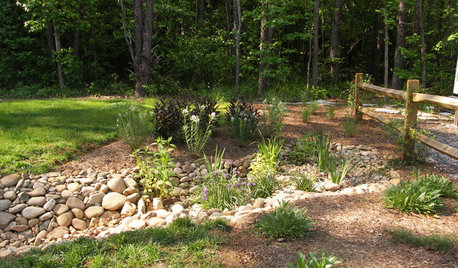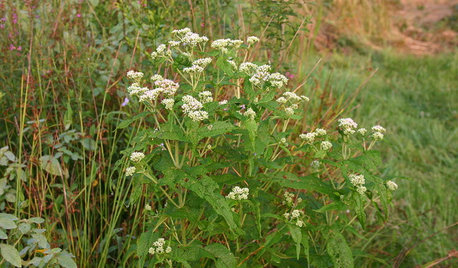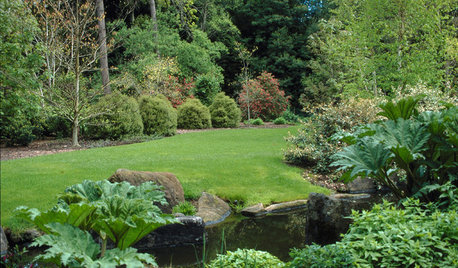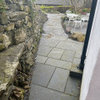need help with plant selection
Dana
6 years ago
Featured Answer
Sort by:Oldest
Comments (20)
NHBabs z4b-5a NH
6 years agoRelated Discussions
I need an arborist
Comments (1)Hi David, You can search for an arborist on line at the International Society of Arboriculture (ISA). This is the organization that certifies arborists, tree workers/climbers, utility specialists, master arborists, etc. An arborist must pass a comprehensive exam and earn continuing education units (CEU's) to remain certified. For your area of the Valley, select zip code or city and a list of professionals will be generated. For your plant design questions, you could ask the University of Arizona Master Gardeners or sign up for one of the free landscaping classes offered by the City of Surprise. Call London Lacy, City of Surprise, Water Conservation Analyst, 623.222.7023, london.lacy@surpriseaz.com Here is a link that might be useful: Find an Arborist - International Society of Arboriculture...See Moreneed help with plant selection
Comments (5)Sansevieria Futura are mid sized. S. Bantel's are nice also, though I suspect they are very slightly more picky about light and water. The two I have remain on the small side, even though one of them "Summered" outside last year. If your spot in the office has bright light the Bantel would be a good choice. As for Futura: I see them for sale all over the place right now as small plants in 4" pots....See Moreneed help with plant placement and selection for zone 6 front yard
Comments (9)I presume you are talking about edging the planting bed with a hardscape feature ...? Always, I find edgings that stick up above grade usually add a busy, junky quality to the overall scene. What makes this worse is that they are usually installed in an unprofessional way ... wiggling and undulating a bit, which makes them look cheap and tacky. A much better solution is a flush laid brick, stone or paver mowing strip that is 8" min. in width, installed to smoothly flow (without wiggling or undulation) with the grade. If you're talking about "edging" with plants, I absolutely would not do this. It's not necessary and is almost always (of course there are a FEW exceptions to just about every rule) a visual detraction. Many times it makes maintenance more difficult, too, as one is tasked with needing to keep an edging plant separate from the plants behind it....See Moreneed help selecting plants
Comments (6)I've many times made the point that things that don't look believable or realistic, don't look good. Here, it doesn't look like anyone would actually tiptoe through those plants in order to sit in those chairs. Would they? In general, the plantings look cluttered with so much variety. Would you consider simplifying? If so, you need to show a broader view with the camera being a few more feet away, as surroundings is important....See MoreDana
6 years agoNHBabs z4b-5a NH
6 years agoDig Doug's Designs
6 years agol pinkmountain
6 years agoDana
6 years agol pinkmountain
6 years agoDana
6 years agoYardvaark
6 years agolast modified: 6 years agol pinkmountain
6 years agolast modified: 6 years agoDana
6 years agoPhoenix Home Services
6 years agoNHBabs z4b-5a NH
6 years agoDana
6 years agol pinkmountain
6 years agolast modified: 6 years agoDana
6 years agoDana
6 years agoNHBabs z4b-5a NH
6 years ago
Related Stories

GARDENING GUIDES8 Unthirsty Plants Help You Save Water in Style
Spend less effort and money on your landscape with drought-tolerant and native plants that liven up your yard
Full Story
LANDSCAPE DESIGN5 Steps to Selecting the Right Plants for a Rain Garden
A simplified look at selecting plants for a rain garden
Full Story
WINTER GARDENINGHow to Help Your Trees Weather a Storm
Seeing trees safely through winter storms means choosing the right species, siting them carefully and paying attention during the tempests
Full Story
GARDENING GUIDESGreat Design Plant: Common Boneset Helps Good Bugs Thrive
Support bees, moths and butterflies with the nectar of this low-maintenance, versatile and tactile prairie-style plant
Full Story
EXTERIORSHelp! What Color Should I Paint My House Exterior?
Real homeowners get real help in choosing paint palettes. Bonus: 3 tips for everyone on picking exterior colors
Full Story
COLORPick-a-Paint Help: How to Create a Whole-House Color Palette
Don't be daunted. With these strategies, building a cohesive palette for your entire home is less difficult than it seems
Full Story
LANDSCAPE DESIGNNative Plants Help You Find Your Garden Style
Imagine the garden of your dreams designed with plants indigenous to your region
Full Story
GARDENING GUIDESYou Don't Need Prairie to Help Pollinators
Woodlands, marshes, deserts — pollinators are everywhere
Full Story
COLORPaint-Picking Help and Secrets From a Color Expert
Advice for wall and trim colors, what to always do before committing and the one paint feature you should completely ignore
Full Story
MOVINGRelocating Help: 8 Tips for a Happier Long-Distance Move
Trash bags, houseplants and a good cry all have their role when it comes to this major life change
Full Story















Dig Doug's Designs